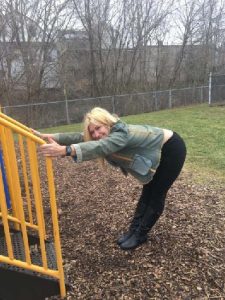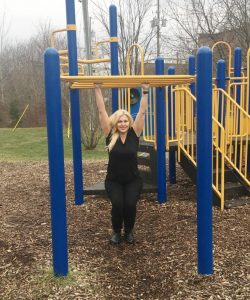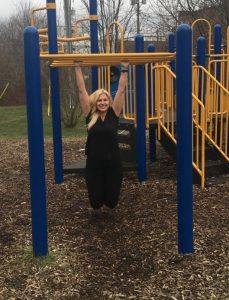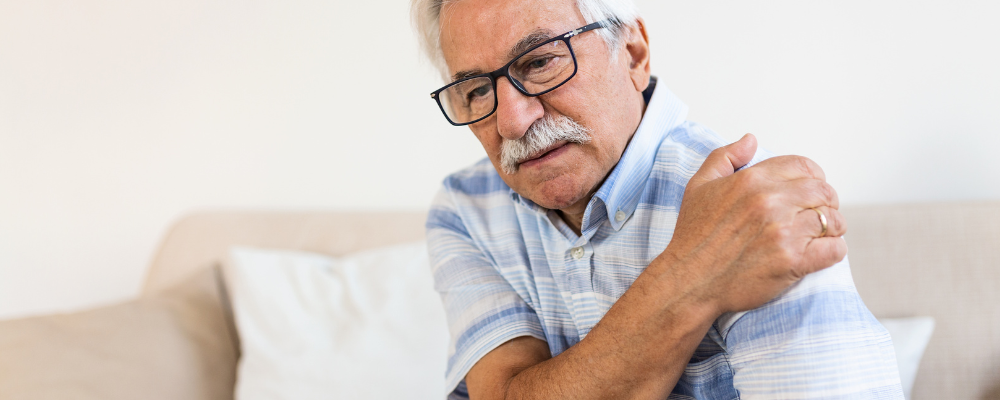Approximately eighty percent of Canadians will experience shoulder pain sometime during their lifetime. A common condition causing significant shoulder pain is called impingement syndrome. Impingement means a tendon or nerve is being compressed. The simplest way I can describe this syndrome is that a rotator cuff tendon gets pinched under the end of the collar bone or acromion during overhead movement. Typically, the pain is made worse by sleeping on the affected shoulder or reaching up towards the ceiling. The rotator cuff is made up of four tendons and their attached muscles. They enclose the entire shoulder and give it support, stability, and functional movement. If we ignore or try to work through impingement, eventually the rotator cuff tendons may develop tiny tears and become inflamed which is painful. This condition is called known as tendinopathy. It’s usually caused by the overuse or general wear and tear which is common as we age. If time goes by and we still do nothing to improve this condition eventually the rotator cuff will tear which can be very painful. Today I want to give you a simple strategy to keep your shoulders healthy.
I know several people who have opted for surgery for shoulder pain. Subacromial smoothing involves shaving 5-8mm of bone and tissue from the underside of the acromion. This surgery creates more room in the subacromial space. By creating space, the rotator cuff tendon is no longer pinched and can glide smoothly. Surgery means down time and rehabilitation costs. This means we may not be able to partake in activities that we enjoy for an extended period of time. What if we could have the same result without surgery?
An orthopedic surgeon named John M Kirsch believes we can and has seen it over and over again with his patients. After Dr. Kirsch experienced shoulder pain and was recommended for surgery, he combined intuition with his extensive knowledge to develop a technique he calls passive hanging. Passive hanging uses gravity to create space and decompress the shoulder joint. The body builds a response to forces on bones over time, which can change the structure.
Dr. Kirsch reasons that his method works, based on human evolution. Humans are primates and are genetically and structurally very similar to the Great Ape. Apes spend much of their time swinging in trees which is called brachiating. Sometime during evolution, we stopped swinging and climbing but we still have the same shoulder structure as apes. Most people are no longer moving their shoulders in the way they are designed to work. Eventually, shoulders weaken and become prone to injury.
Passive hanging may not be for you if you have hyper mobility in the shoulders, adhesive capsulitis, or advanced osteoporosis. As with any new exercise program, check with your physician before you begin. If you have cranky shoulders, be certain to start slowly with your feet on the ground. Start by counting to five for the first few days, eventually working up to thirty. Remember to count out loud to be certain that you are not holding your breath. Palms must be facing forward for hanging exercises.
Chest Opener: This is a great exercise to start with. It will help to open your
chest and place your shoulders in the proper position to hang. Start by placing
your hands on your shoulders. Move your elbows to face the side.

Low Pull: This is a great option if you are not ready for overhead movement. It
can be performed by holding on to a railing. Grip the railing, hinge at the hips,
and pull your tailbone away from your hands until you feel a stretch.

Hanging Feet Down: Start with the chest opener, reach up to the bar with your
palms facing forward. Bend your knees until you find the tension which is
tolerable.

Passive Hang: Start with the chest opener exercise, reach up with your palms
facing forward. After you have practiced for a few days and are feeling
comfortable try unweighting the feet as tolerated.

So, the question is, why are so many of us so bad at brachiating? I mean, if you took the average adult and asked them to hang on the monkey bars, most would only be able to hold on for a few seconds. Once we quit doing something, we soon lose the ability to do it. This is a shame, because when we need to paint the ceiling or reach into the top shelf, we soon find that it’s not comfortable. But it should not hurt to reach overhead!
Have you found that you are spending extra time on the computer during lockdown? This will affect your posture, shoulder, and back health over time. Hanging uses our body weight to create traction which helps to decompress our spine and therefore improving posture. Another important benefit to hanging is an increase in wrist and grip strength. Grip strength declines by about twenty five percent after the age of sixty if we are not pro-active. Portable chin up bars are inexpensive and easy to place in a doorway. All you need is thirty seconds a day and its fun! Remember what George Bernard Shaw said, “We don’t quit playing because we grow old; we grow old because we quit playing.”






